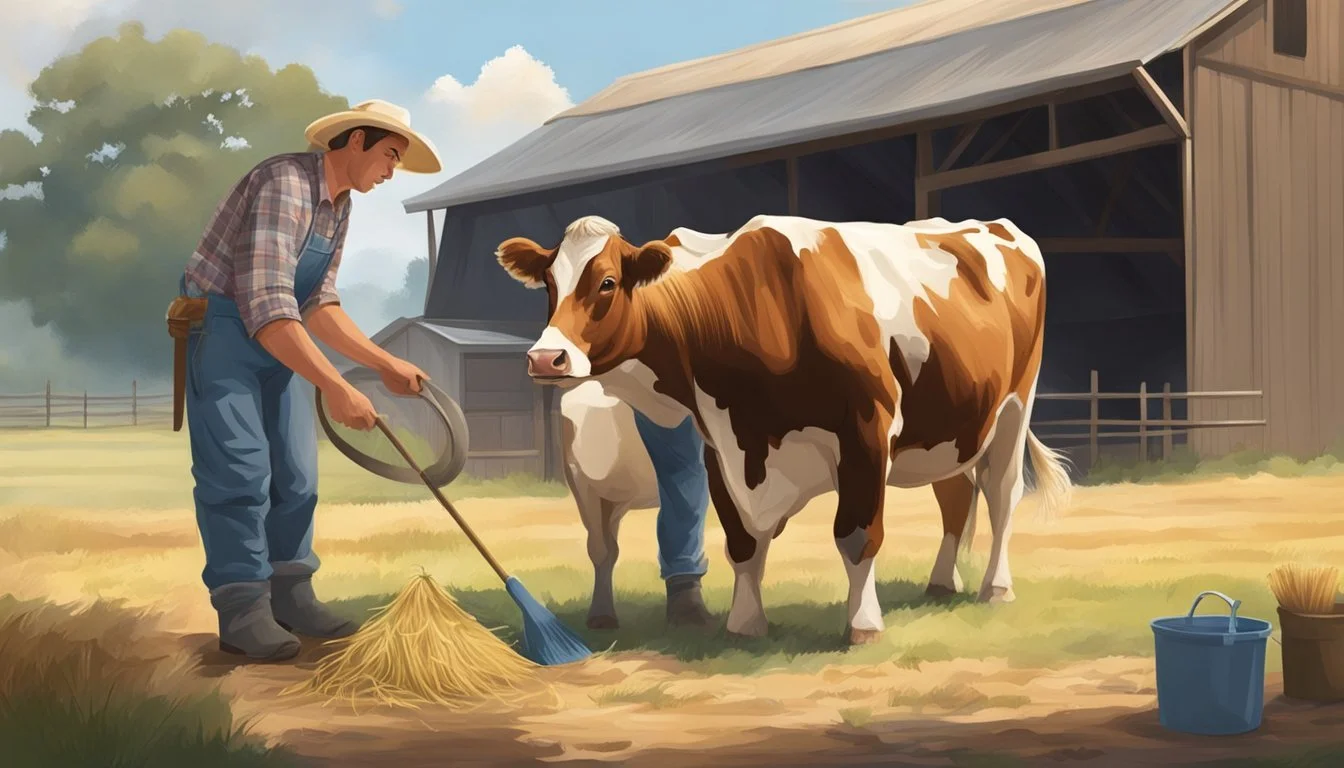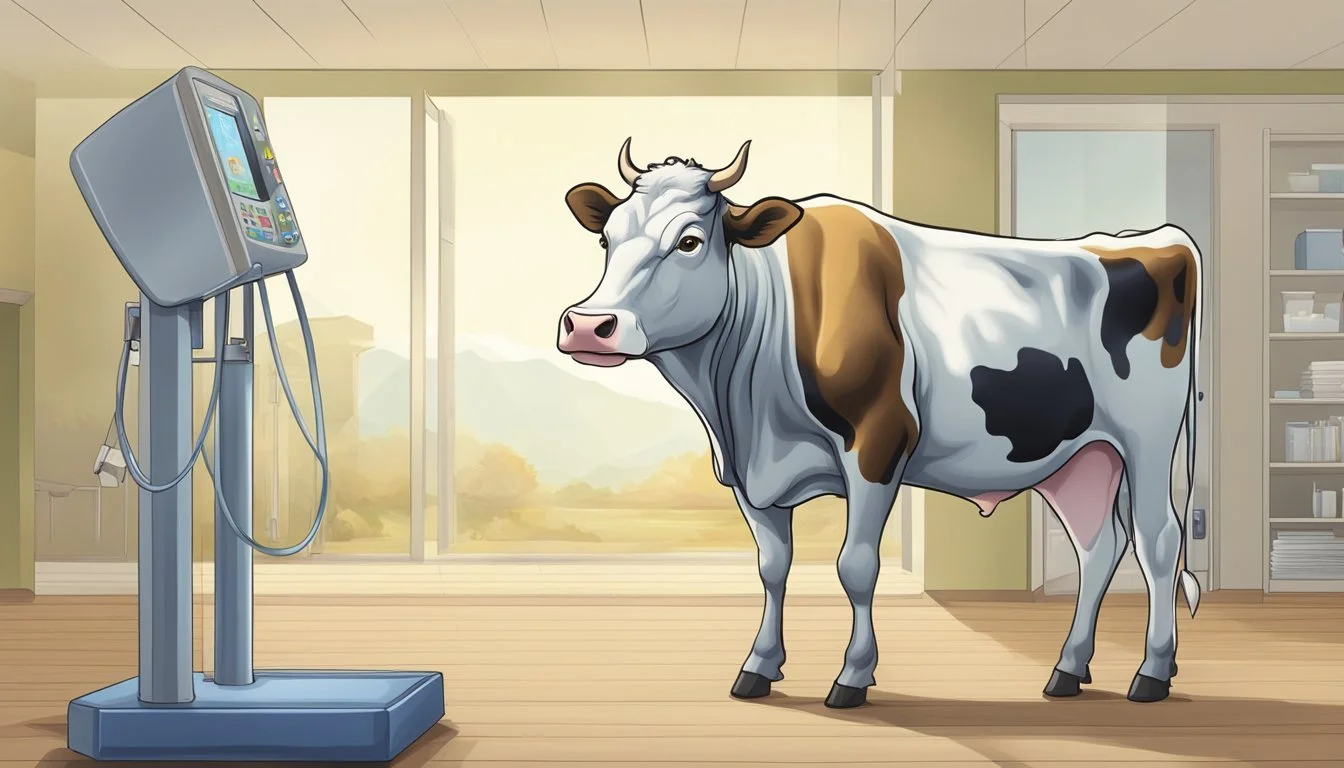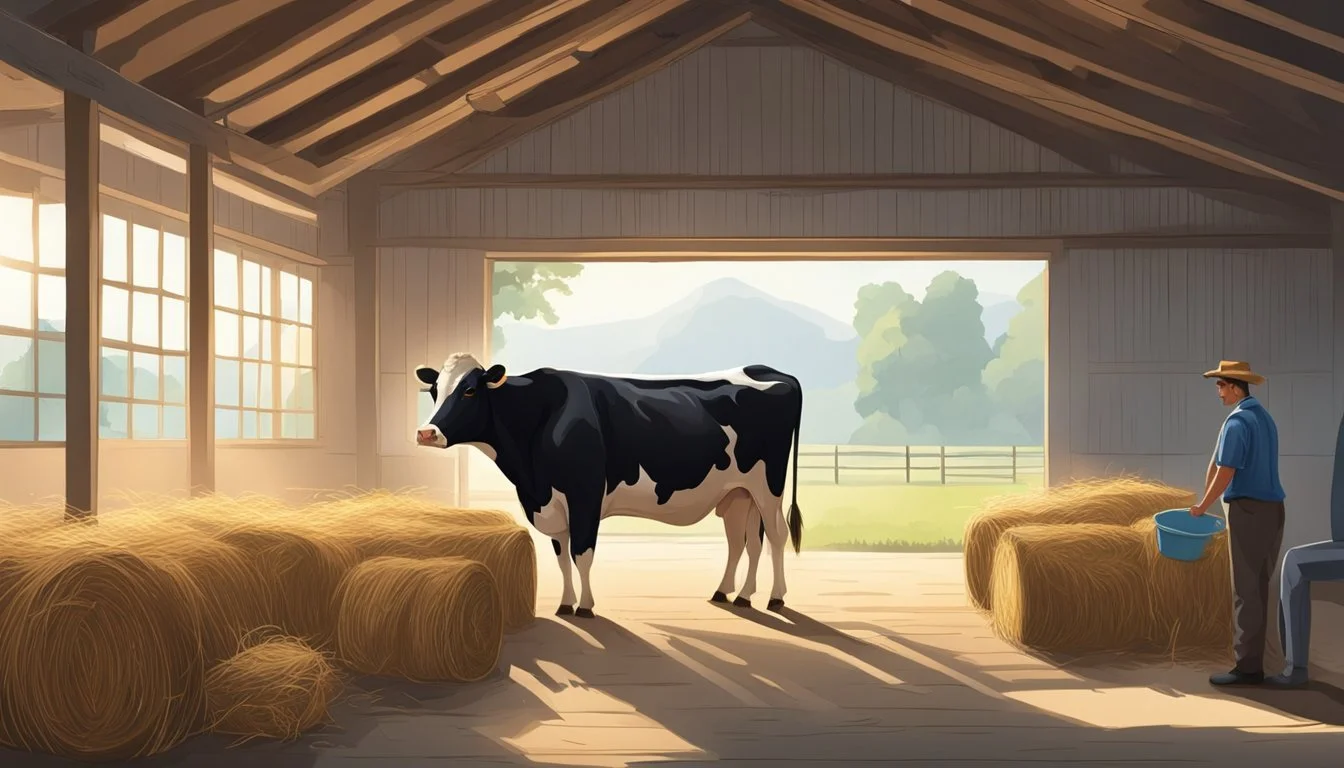How do I Care for a Pregnant Cow
Essential Tips for Optimal Health
Caring for a pregnant cow is a responsibility that requires attention to nutrition, environment, and the animal's overall health, to ensure the welfare of both the cow and her developing calf. Proper management during the gestation period is critical, as it sets the stage for a successful birth and the health of the newborn calf. This includes monitoring the cow's diet to provide adequate energy and nutrients, managing her environment to reduce stress and prevent injury, and keeping a close watch on her health to quickly address any issues that may arise.
Understanding the unique needs of a pregnant cow involves recognizing changes in her physiology and behavior. As the cow progresses through her pregnancy, her nutritional requirements increase, necessitating adjustments in her feed to support both her needs and those of the growing fetus. Mineral supplementation, particularly of elements like zinc, selenium, and iron, is essential to support fetal growth and can have lasting impacts on calf health. Pregnant cows also benefit from a comfortable and safe living environment to minimize the risks during this crucial period.
Proactive healthcare is a cornerstone of caring for a pregnant cow, ensuring that potential complications are identified and managed effectively. Routine veterinary checkups, vaccination programs, and preparing for the birthing process contribute to positive outcomes for the cow and her offspring. By engaging in informed husbandry practices, farmers and caregivers can provide the pregnant cow with the care required for her well-being and the successful rearing of a healthy calf.
Understanding Bovine Pregnancy
Proper understanding of bovine pregnancy is crucial for the health of both the pregnant cow, often referred to as a heifer if it's her first pregnancy, and the future calf. Knowledge about the gestation period, recognizing the signs of pregnancy, and the different stages of pregnancy helps facilitate effective care and management.
The Gestation Period
The gestation period of a cow averages 283 days but can range from 279 to 290 days. It varies slightly based on factors such as breed and environmental conditions. Estrus cycles, which occur approximately every 21 days if the cow is not pregnant, halt during gestation. Successful fertilization by a sire will lead to the heifer's pregnancy and the cessation of the estrus cycles.
Signs of Pregnancy
To confirm pregnancy, several methods can be employed. Rectal palpation is a physical examination method carried out by a veterinarian to feel the presence of a fetus. Additionally, newer technologies such as ultrasound can provide visual confirmation of a calf. Hormonal changes can also be detected through blood or milk tests, which are indicators that a cow is pregnant.
Stages of Pregnancy
The pregnancy in cows is divided into three stages:
First Trimester (Days 1–90): The embryo develops and attaches to the uterine wall, with vital organs beginning to form.
Second Trimester (Days 91–180): This period involves significant fetal growth and development of the calf's features.
Third Trimester (Days 181–283): Marked by rapid growth of the fetus, this stage prepares the heifer for calving and the critical moment when the calf is born. Nutritional requirements for the cow increase substantially to support the fetus's growth and prepare for lactation post-calving.
Nutritional Management
Proper nutrition is critical for the health of a pregnant cow and her developing calf. A tailored feeding regimen and understanding of the cow's heightened nutritional requirements, along with special dietary considerations, ensures the wellbeing of both mother and offspring.
Feeding Regimen
Cows have varying nutritional needs throughout the stages of pregnancy. Early gestation has similar requirements to a cow’s maintenance diet, while later stages demand an increased intake to support fetal development. It's recommended that during late gestation, mature cows should consume 2 to 2.5% of their body weight in dry-matter intake from high-quality forage and concentrates. They should have constant access to clean water and a balanced diet including hay, pasture, or silage.
Nutritional Requirements
A cow's diet must be rich in energy, protein, minerals, and vitamins. During the last trimester, the need for crude protein increases by about 20% and the total digestible nutrients should rise by 16%. Key minerals like zinc, chromium, selenium, iron, and manganese are crucial and need to be provided adequately to prevent deficiencies that can affect calf health, as minerals are transferred to the calf via the placenta.
Special Dietary Considerations
The quality of colostrum, the first milk calves consume, is largely influenced by the cow's diet. Thus, special attention to dietary enhancements like vitamin E and selenium in late pregnancy can improve colostrum quality. Additionally, overfeeding can lead to complications such as dystocia (difficult birth), making body condition score monitoring essential. Grazing on lush, nitrogen-rich pastures should be managed to prevent issues such as grass tetany.
General Care and Management
Ensuring optimal care for pregnant cows involves a rigorous focus on their housing, regular health check-ups, and understanding proper handling techniques. These factors contribute materially to both the welfare of the cow and the development of a healthy calf.
Housing and Environment
The housing and environment for a pregnant cow should provide clean air, sunlight, and maintain an appropriate temperature to prevent stress. Cows require spacious living areas with proper humidity control and cow-safe fencing to prevent injuries. Adequate shelter from adverse weather and comfortable bedding to support the cow's increased body weight and ensure her wellbeing are essential.
Cleanliness: Regular cleaning to ensure a sanitary environment.
Temperature Control: Shielded areas for temperature regulation.
Space: Ample room to move and lie down.
Routine Health Checks
Maintaining the health of a pregnant cow necessitates routine veterinary examinations. Assessing body condition and weight gain ensures a healthy pregnancy. Vaccinations should be up-to-date to protect both the cow and the calf from diseases. Monitoring and providing the necessary micro-minerals such as zinc and selenium are also critical for optimal calf health.
Vaccinations: Schedule and administer as recommended.
Health Monitoring: Frequent checks on weight and body condition.
Nutritional Assessment: Ensuring the cow receives all necessary nutrients.
Handling and Behavior
Pregnant cows require considerate handling to minimize stress and potential harm. They should have access to fresh water at all times and their diet should be closely monitored to support the increased demands of pregnancy and subsequent milk production. Understanding cow behavior is critical for predicting needs and potential health issues during the cow's pregnancy.
Diet management: Adequate nutrition tailored to pregnancy stage.
Gentle Handling: Reduce stress with calm, measured interactions.
Behavior Monitoring: Observing for signs of discomfort or illness.
Monitoring the Cow's Health
Caring for a pregnant cow requires vigilant monitoring to ensure the health of both the cow and the calf. It is crucial to pay close attention to signs that may indicate health issues and to maintain consistent communication with a veterinarian for guidance and support.
Recognizing Health Issues
A farmer should regularly check for signs that a cow may be facing health challenges during pregnancy. Key indicators include changes in body temperature, which may suggest an infection, and monitoring the cow's vulva for any signs of abnormal discharge, which could indicate impending complications. Behavioral changes, such as a decrease in appetite or altered rumination patterns, are also telltale signs that something may be amiss. The goal is to detect any issues early to manage them promptly, ensuring a healthy cow and calf.
Veterinary Support
Consistent veterinary support is indispensable throughout a cow's gestation. A veterinarian can assist in managing and preventing health complications by providing regular check-ups and tailored advice for nutrition and care. It's important for the cow to have a health plan that includes:
Routine Visits: Schedule regular appointments for the cow to have comprehensive check-ups.
Emergency Care: Know how to reach the veterinarian quickly if there are signs of immediate health concerns, such as when a cow's water breaks but labor doesn't progress, or there is bleeding from the vulva.
Proper veterinary care ensures that any signs of infection or health complications are professionally managed to secure the well-being of both the cow and her calf.
Preparation for Calving
Successful calving is crucial for the health and productivity of both the mother and the calf. A well-prepared environment and an informed team can significantly impact the ease of calving and early calf performance.
Creating a Maternity Pen
A designated maternity pen is essential for monitoring and assisting during calving. This area should be clean, dry, and sheltered, ensuring the dam's comfort and minimizing stress. It should also be spacious enough to accommodate the cow and provide easy access for any needed assistance. The maternity pen should be set up well in advance, as cows may show signs of calving like a swollen udder, changes in behavior, or relaxation of ligaments near the tailhead.
Calving Supplies
Prepare a kit with all necessary calving supplies ahead of time to respond promptly when the cow goes into labor. Essential items include:
Obstetrical gloves
Disinfectant
Lubricant
Clean towels
Colostrum or colostrum replacement
Iodine for navel disinfection
A thermometer to check the cow for post-calving fever
Having these supplies on hand can ensure the cow and the calf have the best care immediately after birth, facilitating the calf's early intake of colostrum, which is vital for building its immune system.
Training for Calving
Personnel involved in the calving process should be knowledgeable about the stages of labor and how to assist if necessary. They should understand how to evaluate body condition score to support optimal health of the cow and be able to recognize when to step in and help with the birth. Training on how to handle a newborn calf, such as providing colostrum and ensuring it is nursing properly, is equally important for the ongoing performance of the cow and calf. Moreover, knowing the protocols for raising a replacement heifer will benefit future herd replacements.
Post-Calving Care
After a cow gives birth, special attention to both the cow and the newborn calf is vital to ensure their health and welfare. Proper management reduces the risk of complications and supports the cow's recovery and lactation, as well as the calf's growth and development.
Managing the Cow and Calf
For the Cow: Immediate care focuses on monitoring her health for signs of distress or complications. Cows should pass the placenta within 12-24 hours of calving, and any delay should prompt a consultation with a veterinarian. Observing the cow's appetite, behavior, and physical condition is crucial. In the first few hours post-delivery, offering a nutritional boost is beneficial to help her regain strength. This can include high-quality feed like alfalfa hay or a warm bucket of water with a swirl of molasses, which can assist in replenishing lost nutrients and aiding in the recovery process.
For the Calf: The first feeding of colostrum is essential as it is rich in antibodies that provide immunity to the newborn calf. Calves need to suckle within the first few hours to receive these benefits. Ensuring the calf is warm, dry, and bonding with the mother supports initial development. Calves should be monitored for any signs of illness or abnormal behavior, with prompt veterinary care if necessary.
Drying Off and Weaning
Drying Off: This process is crucial for dairy cows to prepare them for their next lactation cycle. It involves the gradual reduction of milking frequency, allowing the cow's milk supply to decrease naturally. Ultimately, milking is stopped completely, which signals the cow's body to cease milk production. Proper drying off procedure reduces the risk of mastitis and helps maintain the cow's body condition.
Weaning: Usually taking place between two to three months of age, weaning is the process whereby a calf is transitioned from milk to solid feed. This crucial step prepares young cows to graze on pastures and integrate into the herd. A weaning strategy should be planned to minimize stress for both the mother and the calf. A gradual reduction in the availability of milk, coupled with the introduction of high-quality solid feed, facilitates this transition.
These elements of post-calving care are central in the maintenance of a healthy dairy herd, optimizing the potential for continued milk production and ensuring the well-being of the calves as they grow.
Reproductive Management Postpartum
Effective postpartum care in cows is critical to ensure they are healthy and ready for rebreeding. For dairy and beef cattle, this period involves closely monitoring estrus and planning for the right breeding selection to promote successful pregnancies.
Observing Estrus and Rebreeding
During the postpartum period, it is essential for farmers to accurately detect when cows are in estrus. Early detection is vital, as cows should resume normal estrous cycles in the early postpartum period to achieve high pregnancy rates. The use of synchronization programs can assist in managing the timing of estrus and breeding events, allowing for more efficient rebreeding. Dairy cows typically experience heightened nutritional demands during this time, which can impact estrus and fertility.
Key practices include:
Implementing systematic breeding programs
Intense observation for heat signs
Regular use of synchronization protocols
Breeding Selection
Making informed decisions about breeding selection postpartum is crucial. Selection should focus on the cow's health status and prior reproductive performance. For mature cows and pregnant cattle, the goal is to facilitate a transition that maximizes reproductive success and promotes longevity within the herd.
Selection criteria might consider:
Genetic traits favorable for reproduction
Overall health and absence of postpartum complications
Past calving and breeding records
A combination of observations and data-driven decisions ensures that only the most suitable cows are included in the breeding program. This strategic approach contributes significantly to the long-term productivity and profitability of both dairy and beef operations.
Conclusion
Caring for a pregnant cow requires a well-rounded approach that prioritizes both the cow's health and the developing calf. Essential micro-minerals, such as zinc, chromium, and selenium, should be included in her diet to support fetal growth and optimize calf health.
A cow's environment should be calm and stress-free, especially around the time of delivery, to facilitate a safe birthing process. This involves preparing a clean and comfortable space where the cow can calve without disturbances or endangerment.
Nutrition is a cornerstone of prenatal care. Proper feeding regimens must be maintained, ensuring the cow consumes adequate quantities of high-quality forage and tailored supplements to meet her increased nutritional needs during the latter stages of pregnancy.
Finally, proactive management is key. Farmers must consistently monitor their pregnant cows for signs of distress or health issues, intervening promptly when necessary. This encompasses regular veterinary check-ups and adherence to vaccination schedules to maintain both the cow and calf's health.
By embracing these tenets of care, one ensures that pregnant cows are well-managed, leading to the birth of healthy calves and the continued success of cattle farming operations.





